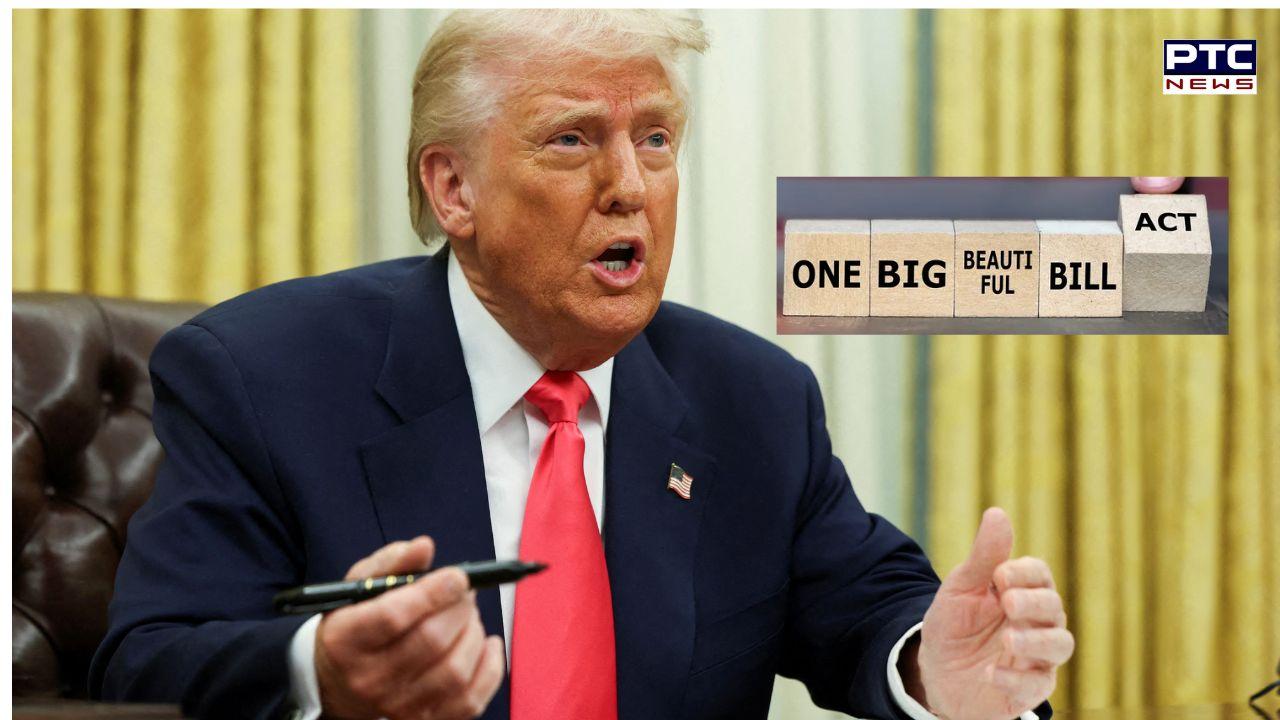

President Trump’s 'Big, Beautiful Bill' delivers sweeping reforms | Who gains and who struggles?
PTC Web Desk: President Donald Trump has declared the recently passed legislation—the “big, beautiful bill”—as one of the most transformative measures in American legislative history. While the Bill promises sweeping reforms and economic impacts, the actual beneficiaries and those bearing the brunt tell a more nuanced story.
From tax breaks for corporations to cuts in safety net programmes, the Bill paints a sharply divided picture of winners and losers.
Who stands to gain
Corporate America: The biggest winners of the new legislation are large corporations. The Bill permanently extends major tax breaks originally introduced under the 2017 Tax Cuts and Jobs Act. Key incentives include the restoration of immediate full expensing for business equipment—a benefit that began phasing out in 2023—and a return to allowing companies to deduct research and development costs in the same year they’re incurred, reversing the five-year amortisation rule from 2022.
Manufacturer: The manufacturing sector emerges as another major beneficiary. The Bill includes a retroactive provision (dating back to January 19, 2025) allowing manufacturers to fully and instantly deduct the costs associated with building new facilities. This benefit will apply to construction projects that begin before January 1, 2029. In addition, semiconductor companies will see enhanced tax credits aimed at encouraging domestic chip production.
Small Businesses and Partnerships: Small business owners and certain partnerships—such as those owned by doctors, lawyers, and investors—will benefit from the continuation of a key deduction. This deduction allows pass-through entities to write off a portion of their business income on their personal tax returns. While the Senate retains the deduction at 20%, the House version proposes increasing it to 23%.
High-Income Earners: The wealthiest Americans are projected to see significant after-tax income gains. According to analysis by the Penn Wharton Budget Model, the top 20% of earners could experience an average income increase of nearly $13,000 annually. For the top 0.1%, that gain surges to over $290,000 a year.
In addition, households earning up to $500,000 annually stand to benefit from a temporary increase in the state and local tax (SALT) deduction cap—raised to $40,000 per year for five years.
However, a new provision will prevent millionaires from collecting unemployment benefits if they lose their jobs.
Workers Receiving Tips and Overtime: The Bill offers targeted tax relief to workers in service industries and those clocking extra hours. Employees who earn tip income can deduct up to $25,000 from their federal income taxes through 2028. Workers earning overtime may deduct up to $12,500 in additional income. These benefits come with income restrictions.
Who will struggle
Low-Income Americans: Perhaps the hardest hit by the Bill are Americans at the bottom of the economic ladder. Deep cuts to Medicaid and the Supplemental Nutrition Assistance Programme (SNAP) represent the most substantial rollback of safety net programme in US history. The legislation introduces mandatory work requirements for Medicaid recipients—a first in the programme's 60-year existence—and expands similar mandates under SNAP to include parents of children aged 14 and older.
The Congressional Budget Office warns that millions of Americans could lose coverage or access to food benefits, with many lacking alternative options such as employer-provided health insurance.
According to the Penn Wharton Budget Model: Those earning under $18,000 annually could see their after-tax income fall by $165 (a 1.1% decrease). Individuals making between $18,000 and $53,000 would gain just $30. Middle-income households (earning between $53,000 and $96,000) would see a modest rise of $1,430, or 1.8%.
Hospitals and Healthcare Providers: Hospitals, particularly those serving low-income populations, are sounding alarms over the Bill’s deep Medicaid cuts. The American Hospital Association estimates that nearly $1 trillion in cuts will result in significantly higher levels of uncompensated care and reduced access to treatment.
A $50 billion fund has been earmarked for rural hospitals, but healthcare leaders argue this is nowhere near sufficient to cover the losses. Additionally, stricter verification rules for Affordable Care Act subsidies may lead to more Americans losing health coverage.
Clean Energy Sector and EV Industry: The clean energy industry faces a major setback. While the Senate ultimately removed a proposed excise tax on wind and solar energy, the bill still strips tax incentives for renewable projects starting in 2027. Tighter qualification rules further limit eligibility, prompting the American Clean Power Association to warn of job losses and rising electricity costs.
Electric vehicle manufacturers also take a hit. The Bill terminates the $7,500 EV tax credit at the end of September, eliminating a major consumer incentive that was previously slated to continue through 2032.
Deficit Hawks and Borrowers: Despite promises of fiscal responsibility, the legislation is expected to add about $3.4 trillion to the federal deficit over the next decade, according to the CBO. As national debt rises, so too will interest payments—potentially exceeding $1 trillion annually. These elevated rates could have a cascading effect, making mortgages, car loans, and business credit more expensive for everyday Americans.
- With inputs from agencies
